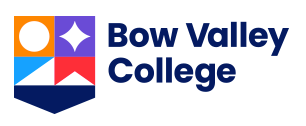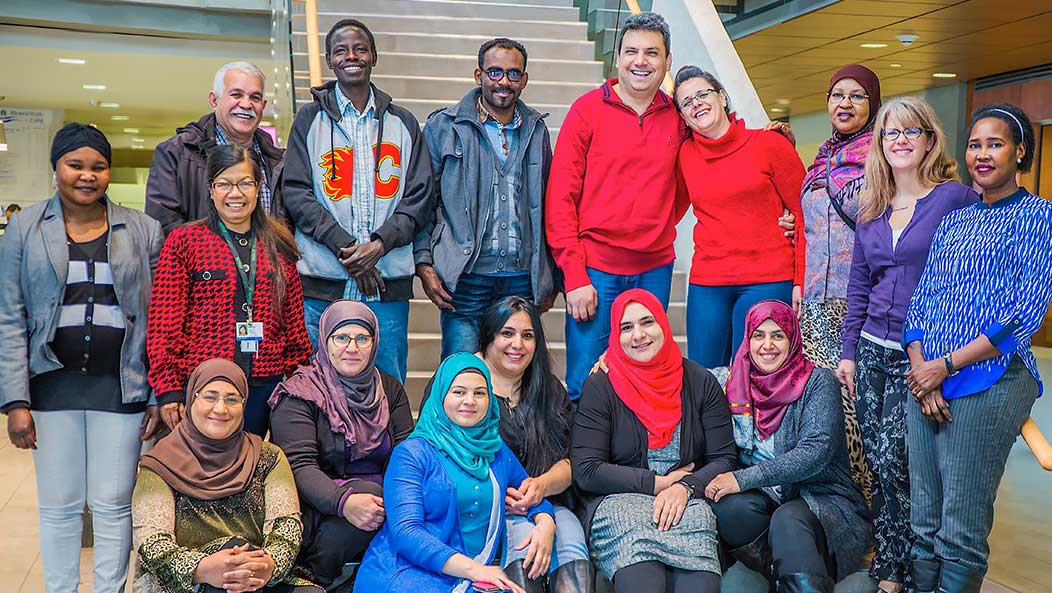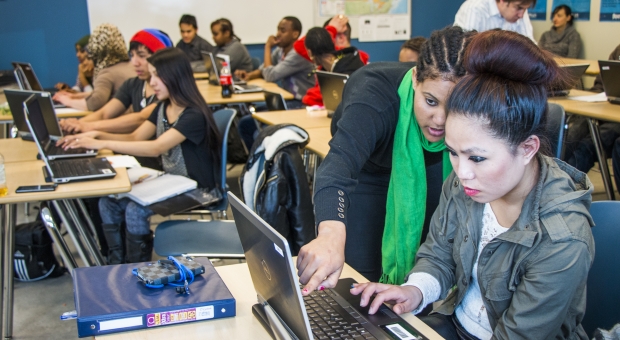Phases
Project Description
Immigrants to Canada have powerful stories to tell. Developing Critical Thinking and Digital Literacy Skills through E-storytelling explored best practices in enhancing English Language Learning (ELL) with technology, specifically the use of digital storytelling. The project combined the unique attributes of face-to-face and online mediums to deliver computer supported learning instruction within Alberta in which digital stories were developed as a capstone project at CLB 6/7.
The objectives for this project were to:
- Explore an e-learning genre not yet explored in Alberta
- Integrate Guiding Principles in online ESL programming in a blended learning model
- Build English language learners’ critical thinking and digital literacy skills
- Improve communicative language skills
Phase I
Phase I: Research
The first phase of Developing Critical Thinking and Digital Literacy Skills through E-storytelling involved researching how to effectively develop and deliver a digital storytelling course for English language learners. Activities completed in Phase I included:
- Conducting a literature review focused on digital storytelling projects that have been piloted throughout the world and specifically in Canada and Alberta.
- Determining the technical requirements for the project. Investigations were undertaken to determine the most effective software for this program. A platform of Windows based software as well as some open source software was selected for use.
- Researching and clarifying the implications and restrictions around copyright as digital storytelling involves the use of text, photos, images, music and voice.
- Conducting research on how to effectively deliver a digital storytelling course through a blended learning environment. Timing, division of content and effectiveness of the learning management system were determined following best practices from Guiding Principles in online ESL programming.
Phase II
Phase II: Course Development
The second phase of Developing Critical Thinking and Digital Literacy Skills through E-storytelling was course development. Activities completed in Phase II included:
- Determining course objectives, outcomes and outlines: Course development began with the creation of course objectives and outcomes. After creating the objectives and outcomes, three course modules were designed. After the modules were outlined, major areas of content were identified. Assignments and rubrics were drafted to match the outcomes and objectives of each module.
- Developing course content and assets: The next stage in course development was the creation of all course materials and all assets to accompany the activities for in-class and online lessons.
- Revising course content: At the end of the pilot, the instructor provided written feedback on the materials, timing and the delivery mode. Learners also completed a questionnaire related to course content. All feedback was taken into consideration to determine the revisions to be made.
Phase III
Phase III: Pilot Course
The third phase of Developing Critical Thinking and Digital Literacy Skills through E-storytelling involved the pilot of the course. The course included three modules:
- Module one introduced learners to digital storytelling. In this module, learners investigate the components of a digital story and learn about the story writing process.
- Module two supported learners to write and storyboard their digital stories. The storyboard process involves mapping out the images, narrative, audio and transitions that is used to tell the story.
- Module three focused on the technical production of a digital story and developed learners' formal presentation skills. Learners applied the skills and strategies they have practiced throughout the course to produce a short, polished electronic story.
Learners targeted for the program were immigrant youth who had an interest in technology and needed to develop storytelling skills. Each pilot course ran for twelve weeks. During the pilot, learners had the opportunity to interact in an online environment with youth learners at Mohawk College in Ontario. Mohawk College also offers a LINC Video and Photography class that has similar outcomes to Developing Critical Thinking and Digital Literacy Skills through E-storytelling.
Key Findings
Project finding included:
Blended learning is an effective method of delivery for ELL classes in Alberta
The outcomes of this project reinforce that, with the appropriate resources, a blended delivery model is effective for ELL learners at Stage Two of the CLBs. Learner feedback indicated that blended learning:
- provides an effective balance of activities for learners
- provides opportunities for learners to develop multiple skills in language and technology
- motivates learners by engaging them in different modalities
Dedicated resources are required to develop and deliver a digital storytelling course
To deliver a successful digital storytelling course, an institution requires the following resources:
- a wide range of computer hardware: digital scanner, microphones, digital cameras
- appropriate software: image editing, audio editing and multimedia post production software
- dedicated computer lab time for learners
- rooms appropriate for recording audio
- staff who are familiar with basic photography conventions and the necessary software
- support staff to help learners with the editing process
In addition to the resources required for face-to-face course development, a blended course requires additional human resources to complete development. For example, access to a media developer is necessary to ensure that online materials are dynamic and engaging.
Learners in a digital storytelling course benefit from previous experience with technology
Developing Critical Thinking and Digital Literacy through E-storytelling was piloted with youth learners who had a wide range of previous exposure to technology. Because digital storytelling is composed of many elements, learners with less technology experience had difficulty finding appropriate music and images, and managing their electronic files. These difficulties stemmed from learners not having adequate previous contact with technology, and having little access to technology and bandwidth outside of school hours. In contrast to these difficulties, learners with a strong foundation in digital skills were able to manipulate the digital tools and create digital stories that were emotionally powerful and visually appealing in the time allotted.
Digital literacy is a key skill that should be incorporated into ELL instruction and course delivery
Technology has changed the way we communicate and obtain information. As a result, ELL programs need to reconsider how to best support the development of learners’ reading, writing, listening and speaking skills. It is our recommendation, particularly for ELL learners in transitional programs that are preparing them for post-secondary study or workplace contexts, that digital literacy is addressed in the curriculum. Embedding digital literacy skills within this course fostered collaboration and creativity. It provided learners with relevant learning opportunities that address a variety of learning styles, and it allowed learners to manipulate media to construct meaning and foster higher order thinking skills.
Digital storytelling and multimodal expression are effective vehicles for building critical thinking and digital literacy skills in ELL learners
Based on the feedback gathered from our learners and evidenced by the quality of the digital stories that they produced, digital storytelling is an effective way to build critical thinking and digital literacy skills. The employment of technology throughout the course and its blended format presented learners several opportunities to develop their digital literacy. Learners needed to use and understand information in order to create meaning in their stories. Several of the steps in the story writing process created opportunities for critical thinking. The technological emphasis of digital storytelling addressed learners’ digital literacy skills. As well, we feel that language learning is enhanced by opportunities for multimodal expression. Part of the feedback we received from learners who had successfully completed the course, was appreciation for the multimodal expression that they could use in their stories.


